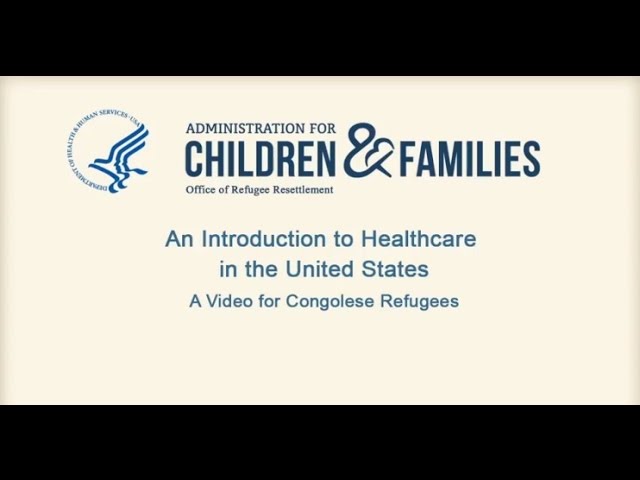Refugee and immigrant children often arrive in the U.S. with unique health care needs and experiences shaped by trauma, displacement, and cultural transition. Service providers play a critical role in ensuring the health, safety, and integration of newcomer children. This blog post outlines key recommendations for supporting newcomer children and their families’ health needs in a family-centered, trauma-informed, and culturally responsive way.
1. Build Trust Through Cultivating Openness
- Start with Respect: Approach every child and family with openness to learn, recognizing that each child’s beliefs and experiences are unique.
- Build Rapport: Establish trusting relationships with children and family by showing empathy, patience, and respect for their unique health-related beliefs and decision-making processes.
- Provide Language Access Services: Ensure availability of trained interpreters and linguistically appropriate health educational materials to facilitate understanding and engagement. Always use professional interpreters when needed, and be mindful of non-verbal cues and cultural norms. Never rely on youth to interpret for their families.
- Offer Training: Prioritize taking cultural sensitivity training to improve knowledge, understanding and respect of newcomers’ backgrounds, and the health impacts of those backgrounds, which can improve communication and trust.
2. Apply a Trauma-Informed Lens
- Put Safety First: Create environments where children and their family feel physically and emotionally safe. This can involve explaining routines clearly, providing multiple choices when possible, and responding to distress with calm and consistency so children can feel secure and know what to expect.
- Practice Trauma-Informed Care: Recognize signs of trauma and provide appropriate referrals and support services to address mental health needs. For more information on trauma-informed care, access this Trauma-Informed Care in Case Management webinar and/or the information guide Trauma-Informed Care: A Primer for Refugee Service Providers.
- Refer to Trauma-Informed Providers: Partner with health care and mental health professionals who understand the impact of forced migration and displacement. View this guide for tips on collaborating with health care providers, and this post on how to create your own refugee health care provider directory.
3. Conduct Comprehensive Family Assessments
- Learn Before You Lead: Take time to understand the family’s relevant experiences, values, and migration health journey. Recognize that children and their family may have experienced significant hardship or loss, including loss of close family members or friends who were significantly involved in supporting a child’s health needs, and approach interactions with sensitivity.
- Assess Language and Literacy: Ask the family for their preferred language for discussing health concerns and health literacy levels to tailor communication. Health can be a sensitive and complicated topic that requires complete understanding. Therefore, a family’s preferred language for discussing health may differ from the language they use to discuss other case management topics, and may differ between family members.
- Identify Non-Health Factors Impacting Health: Explore factors such as housing instability, financial insecurity, food insecurity, lack of transportation, and lack of access to education. All can negatively impact a child’s growth and development. Recognize that these factors may make prioritizing health difficult for the family until these needs are met. Work with the family to support them in accessing these needs while also encouraging them to simultaneously address health needs.
4. Prioritize Connecting to Primary and Specialty Care
- Connect Families to Health Care: Prioritize applying for eligible health benefits for families, including the medical screening examination, and connecting them with primary care as soon as possible. Ensure that clients share any overseas medical records and domestic medical examination results and referrals with their primary care providers at the first visit. For more guidance on coaching clients on preparing for initial medical appointments, download this information guide and checklist.
- Promote and Prepare for Well-Child Visits: Encourage families to schedule and attend pediatric/primary care appointments, immunizations, and developmental screenings. Health care providers will want to check a child’s height, weight, hearing, vision, and dental (oral health) during initial visits to establish a baseline of how the child is doing and what health needs they have. Malnutrition (which includes both being obese/overweight or underweight), stunting, and vitamin/mineral deficiencies are common issues refugee and newcomer children experience. Healthcare providers may also request additional exams and diagnostic tests such as checking blood lead levels and for infectious diseases. Vaccines are incredibly important in protecting children’s health and are also often a requirement for school enrollment.
- Specialty Care: For children with significant medical conditions and/or who need specialty care, work with the primary care provider in assisting families in scheduling and attending those appointments.
- Connect to Resources: Collaborate with schools, health care providers, housing authorities, and community organizations to create a coordinated support network and ensure families know who, how, and when to contact these support systems.
5. Provide Health Education to Support Self-Advocacy
- Educate Caregivers: Provide resources and information on child development and navigating new systems such as school and health care to support informed decision-making. Service providers can learn more about trauma’s impact on child development by viewing the webinar Traumatic Stress Among Refugee Children and Youth Part 1: Viewing Trauma through a Developmental Lens.
- Promote Self-Advocacy: Encourage families and children to voice their needs and preferences in interactions with health care providers. Support families by providing education and practice around U.S. health care navigation and problem-solving common health care access issues. Connect families with volunteers, interns, and/or community members (for example, community health workers with refugee backgrounds) who can help them access and navigate health care.
Conclusion
From language barriers to traumatic past experiences, newcomer children and families face daunting challenges in their health care journeys. Still, through a family-centered, trauma-informed, and culturally responsive approach, service providers are uniquely positioned to help clients thrive.
Related Switchboard Resources
Podcast: Collaborating with Pediatricians and Families to Care for Newcomer Children
Video: Well-Child Visits: What to Know
Guide: Raising Young Children in a New Country: Supporting Early Learning and Healthy Development
Webinar: Children with Significant Medical Conditions Across the Migration Continuum
Guide: Psychological First Aid (PFA) for Displaced Children and Families










